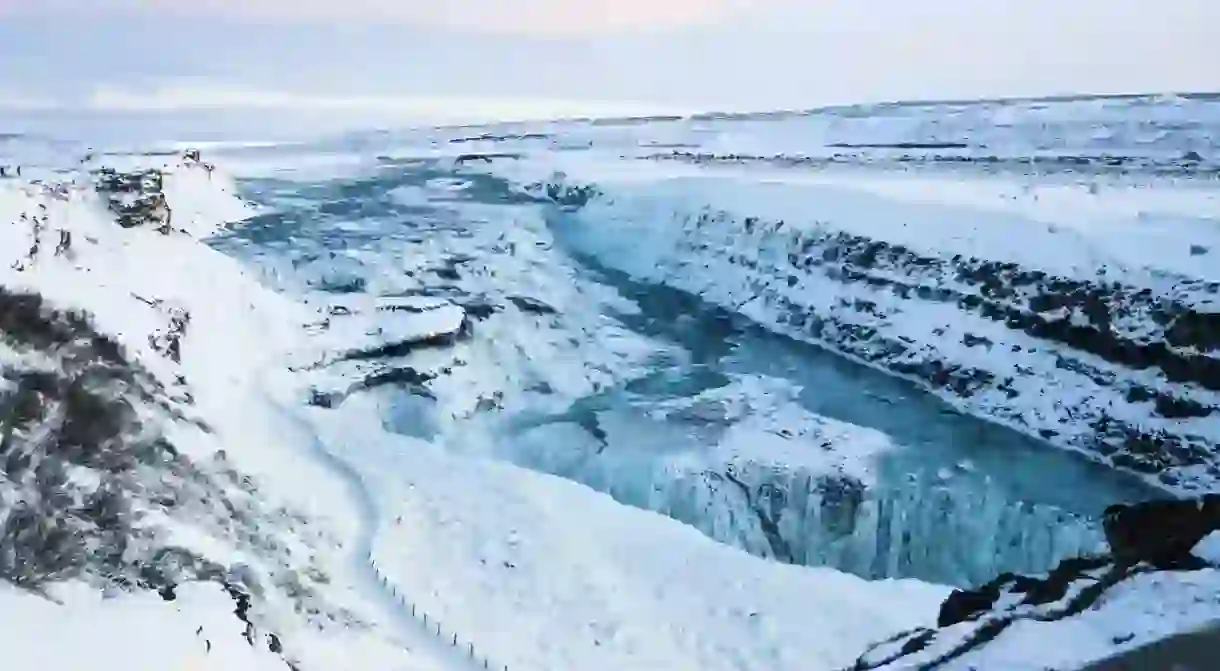Visiting Iceland: 21 Awesome Things to Do for an Unforgettable Trip

With waterfalls and glaciers, geothermal landscapes and awe-inspiring rock formations, Iceland is bursting with unmissable natural attractions. Mainly found by road trip, hike or tour guide, these extraordinary sights are sure to leave a lasting impression.
Geysir
Shop, Store

Dyrhólaey
Natural Feature

Located close to Vík, the southernmost village in Iceland, these rock formations are a must-visit on any tour of Iceland’s remarkable southern coastline. The “the hill island with the door hole”, as its name translates, is an impressive sight on its own, but the surrounding view are spectacular if you fancy braving your way onto the 120m arch. Do note that access onto the arch itself can be limited in springtime due to nesting seabirds!
Ásbyrgi Canyon
Forest, Natural Feature, Park
Jökulsárlón
Natural Feature

This glacial lake in southeast Iceland contains luminous blue icebergs, calved from the largest glacier by volume in Europe, Vatnajökull. Be sure to head to Diamond Beach and, for the full experience, head out on a boat tour, often paired with a visit to the spectacular nearby ice caves.
Svartifoss
Natural Feature

This 12m (39ft) waterfall, inside Vatnajökull National Park, is framed by black columnar basalt. You can take a short hike from the visitor centre to get remarkably close to this unique sight, one of the smaller examples to be found among Iceland’s numerous waterfalls.
Lake Víti
Natural Feature
This crater was formed during a prehistoric eruption, yet Víti itself was formed during another eruption in 1875. Víti’s colour ranges from milky green to pearly blue and can be bathed in after making the steep descent down into the crater to its shores.
Reynisfjara
Natural Feature

This black-pebble beach on the south coast features the majestic Reynisdrangar basalt sea stacks and a pyramid-shaped basalt column. It has become one of the most iconic sights in Iceland, in no small part due to its popularity with Hollywood as an otherworldly filming location.
Þingvellir National Park
Park, Natural Feature
This wonder became the site of the world’s first democracy in 930 AD. Fittingly, it is also where the Eurasian and North American tectonic plates meet, which means you can quite literally walk between the boundaries of continents. You can even take it a step further and snorkel between them in the crystal clear waters of Silfra.
Gullfoss
Natural Feature

The river Hvitá forms this multi-tiered waterfall in southwest Iceland. It is part of the popular Golden Circle tour and is equally stunning in all seasons. There are many waterfalls worth searching out across the island, but few are as thunderously impressive as Gulfoss.
Dimmuborgir
Natural Feature
Located next to Lake Mývatn in the north, Dimmuborgir (“dark castles” in Icelandic) is a labyrinth of black lava formed into towering caves and formations created over 2,300 years ago.
Rauðasandur
Natural Feature
This stunning golden-red beach on Látrabjarg Peninsula in the Westfjörds is a serene setting, where the sand appears to be glowing on a sunny day.
Dettifoss
Natural Feature

Dettifoss is one of Europe’s most powerful waterfalls, and is located in northeast Iceland. The huge force of water forming the fall comes from Vatnajökull glacier. The waterfall was used in the opening scene of the 2012 science fiction film Prometheus.
Dverghamrar
Natural Feature
With a name meaning “dwarf rocks” in Icelandic, these peculiar columnar basalt formations are a protected national monument. The extensive fracture network creates a multifaceted display.
Krafla
Natural Feature
This Martian landscape created by geothermal activity in the north of Iceland has a fascinating array of colourful sediment deposits, and intriguing accompanying smells.
Mývatn Nature Baths
Natural Feature

A smaller version of the popular geothermal Blue Lagoon spa in the south, Mývatn Nature baths offer a similar experience in a serene atmosphere.
Herðubreið
Natural Feature
Considered the Icelandic national mountain, and sometimes called “the queen”, this flat-topped mountain in the Central Highlands is the sole figure rising from the surrounding desert.
Esja
Natural Feature
The Arctic Henge
Natural Feature
Towering over the village of Raufarhöfn in eastern Iceland is the sundial known as the Arctic Henge, a long-term work still under construction. The structures have been placed in accordance with allusions found in Icelandic folklore and mythology.
Snæfellsjökull
Natural Feature, Park

Within Snæfellsjökull National Park lies this glacier-capped volcano, used by Jules Verne in his 1864 novel A Journey to the Center of the Earth. It can sometimes be seen all the way from Reykjavík.
Kjarvalstaðir Art Museum
Art Gallery

Opened in 1973, this building is a fine example of Nordic modernism and displays a permanent collection of one of Iceland’s most celebrated landscape painters, Johannes S Kjarval (1885–1972).
Blue Lagoon
Natural Feature

Yes, it has become a major tourist hotspot and lost a dash of the magic in the process, and yes there are lots of natural hot springs in Iceland worth visiting, but the allure of the Blue Lagoon remains as powerful as the volcano that powers its warm, mineral-rich waters. Those otherworldly milky blue pools and jagged volcanic surroundings do still inspire awe, and a dip into them is still well worth a go, especially if you’re not straying far from Reykjavik. Recommended by Gethin Morgan.













